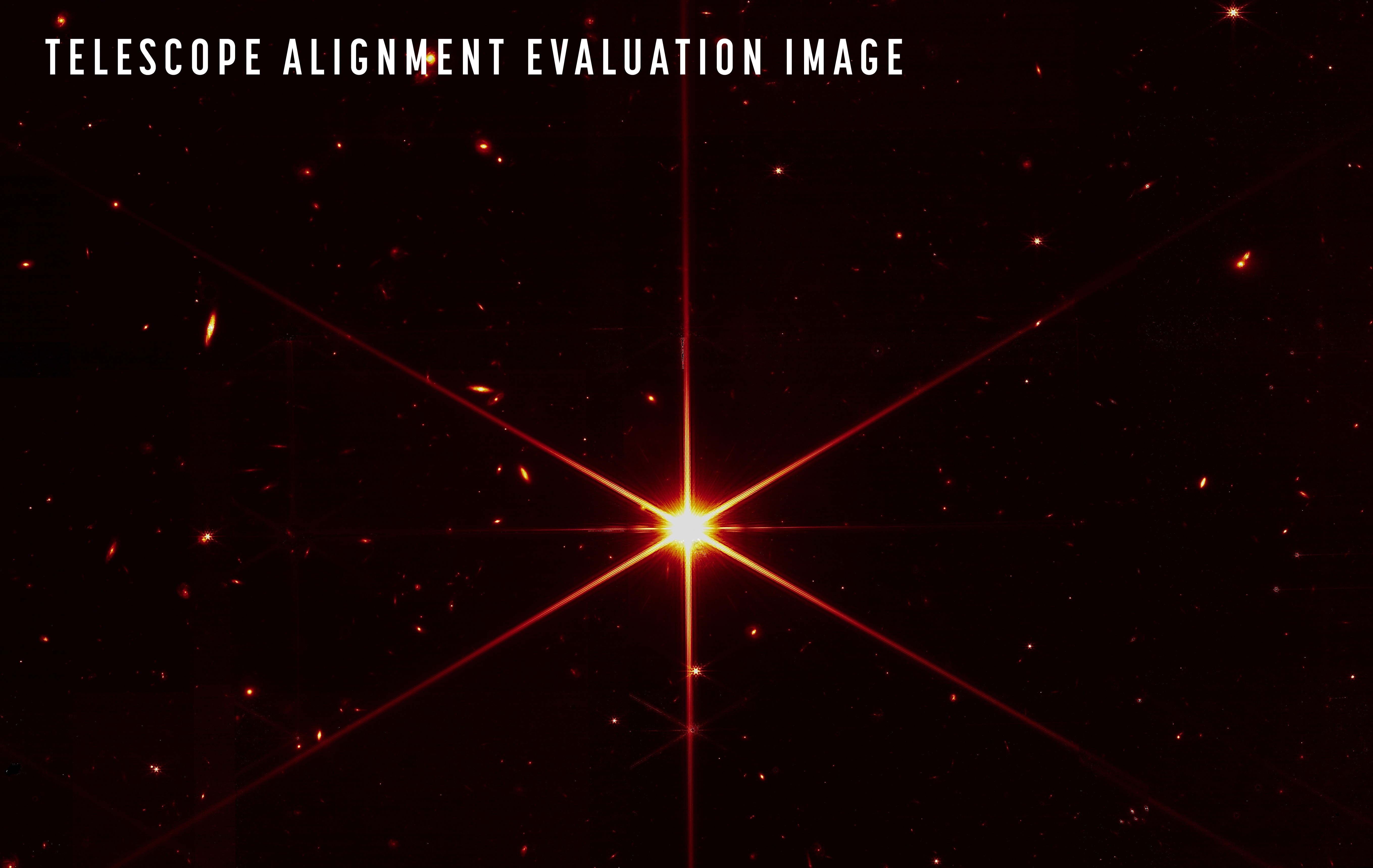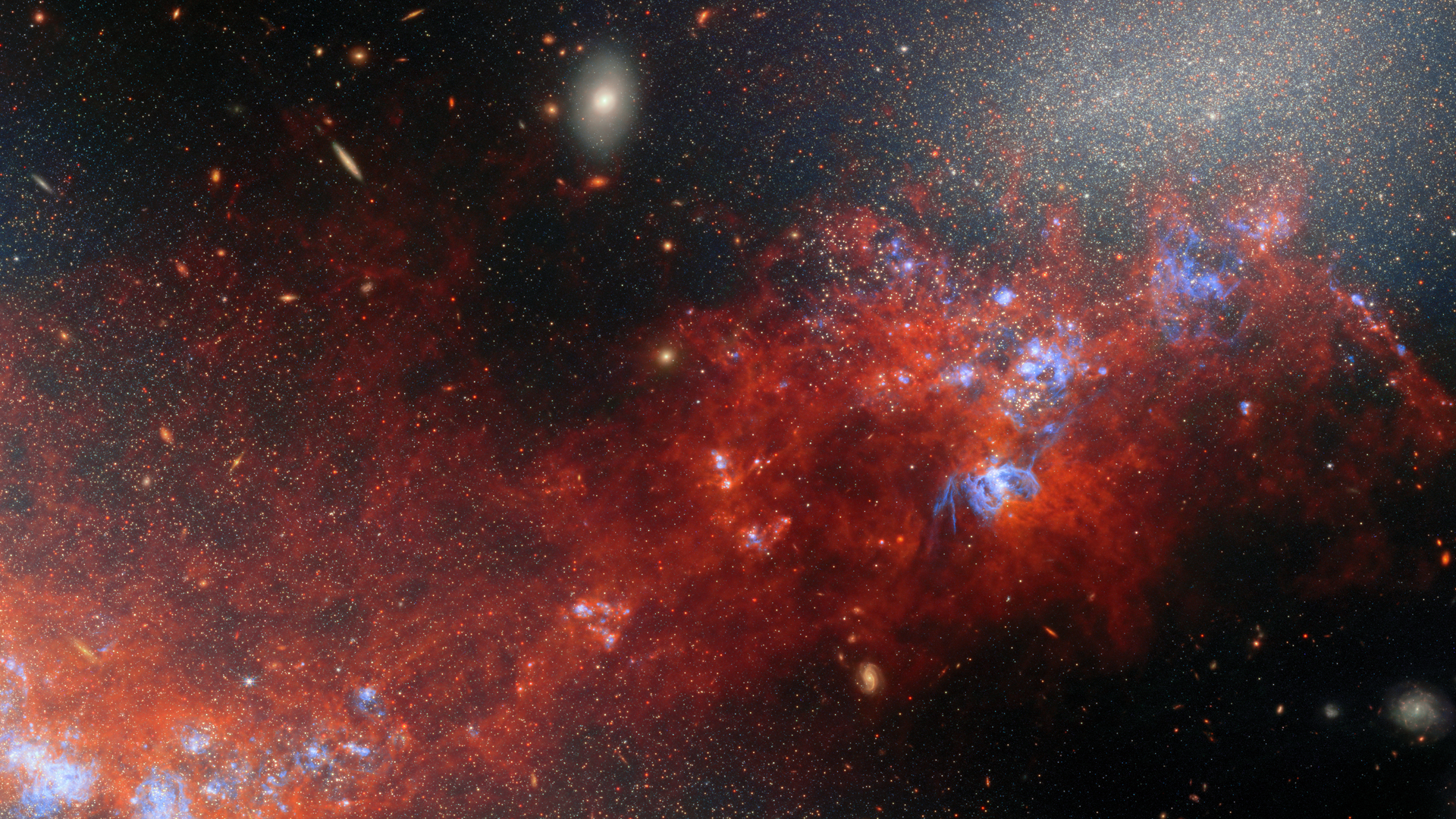James Webb Space Telescope's 1st view of the cosmos has scientists thrilled for more

The James Webb Space Telescope's main mirror is fully aligned and performing even better than it had been designed to do, NASA officials revealed in a news conference held virtually on Wednesday (March 16).
The 21.3-foot-wide (6.5 meters) mirror composed of 18 hexagonal segments had to travel to space folded. Aligning it into one smooth reflecting surface was one of the main tasks that the Webb control team has had to tackle since the giant telescope's launch on Dec. 25.
The alignment process, which involved fine-tuning the positions and inclinations of the 18 segments with nanometer-scale precision, has now been completed, officials said. Although that process is not yet complete, the $10 billion James Webb Space Telescope mission — the most complex and most expensive such observatory ever launched — is already producing images that take the scientists' breath away.
"The telescope's performance so far is everything that we dared to hope," Jane Rigby, Webb operations project scientist at the NASA Goddard Space Flight Center in Maryland, said in the news conference. "The engineering images that we saw today are as sharp and as crisp as the images that Hubble [Space Telescope] can take, but are at a wavelength of light that is totally invisible to Hubble. So this is making the invisible universe snapping into very, very sharp focus."
Related: NASA's James Webb Space Telescope: The ultimate guide
When the mirror alignment process started in early January, the ground team pointed the telescope at HD 84406, what the scientists described as a very "boring star" in our Milky Way galaxy. The star, 100 times fainter than what can be seen with the naked eye, was chosen not for its scientific significance but purely for its brightness and location.
At the beginning of the alignment process, the telescope was delivering 18 individual images of the star, with each of the primary mirror segments acting as a telescope on its own. The image released on Wednesday shows a bright-shining amber-colored star emanating streams of light across the universe. Even more interesting than the star itself, however, is its background, revealing dozens of specks and dots — each a distant galaxy that was previously out of reach.
Breaking space news, the latest updates on rocket launches, skywatching events and more!
These distant galaxies make Webb's first image a so-called deep field. Such photographs, focusing on small sections of the sky, aim to capture the most distant objects in the universe. Deep fields are a specialty of the Hubble Space Telescope, Webb's predecessor. Webb, however, is set to beat Hubble in its ability to peer into the depths.
"There's no way that Webb can look for 2,000 seconds at any point in the sky, and not get an incredibly deep field," Rigby said. "This is going to be the future from now on. Wherever we look, it's a deep field. Without even really breaking a sweat, we're seeing back in time to galaxies that we're seeing the light as it looked billions of years ago."
Randy Kimble, NASA's Webb project scientist for integration, test and commissioning, told Space.com in an earlier interview that where Hubble requires weeks to obtain some of its best deep field images, Webb will accomplish the same results within hours.
However, the two observatories don't image the universe in the same wavelengths: Hubble is an expert at visible and ultraviolet radiation and Webb sits firmly in the realm of the infrared.
The Webb telescope was designed to be up to 100 times more sensitive than Hubble, and that goal has not just been accomplished but exceeded, NASA officials said in the briefing.
"We said last fall that we would know that the telescope is working properly when we have an image of a star that looks like a star," Lee Feinberg, Webb optical telescope element manager at the NASA Goddard Space Flight Center said in the briefing. "Now you're seeing that image. And I'm happy to say that the optical performance of the telescope is absolutely phenomenal, it is really working extremely well. The performance is as good if not better than our most optimistic prediction."
No other telescope before has been launched to space with a foldable mirror. To make the mission possible, the engineering teams at NASA and its partner organizations had to develop completely new technologies that had never been flown in space before. As a result, the James Webb Space Telescope project faced many delays and cost overruns. The work, however, has paid off, as the telescope has sailed through all of its major commissioning milestones without the smallest hiccup.
"Of all the sleepless nights I've had and the worries that I've had, they are all behind us now," Thomas Zurbuchen, NASA's associate administrator for science, said in the briefing. "It's not because there's no path ahead: there's still a mountain to climb, those important tasks that need to be done. But we are way up that mountain."
In early January, the telescope deployed its tennis-court-sized sunshield in a similarly smooth process.
The control teams will now focus on the telescope's four science instruments. First scientific images are expected to be released in June or July. NASA is keeping the celestial object that will become the first target of Webb's scientific exploration secret until then.
The mirror alignment was accomplished with the help of the Near Infrared Camera (NIRCam), one of Webb's four scientific instruments. The remaining three are still waiting to open their eyes.
In addition to aligning the mirror, the scientists had to wait for the instruments to cool down to extremely cold temperatures close to absolute zero. Since Webb is an infrared telescope (and infrared light is essentially heat), any warmth emitted by the telescope and its instruments would dazzle the detectors and make it impossible for them to see the most distant objects in the universe.
With all its gear deployed, aligned and cooled down, Webb will be able to see the first stars that sprung up in the nascent universe only a few hundred million years after the Big Bang.
Follow Tereza Pultarova on Twitter @TerezaPultarova. Follow us on Twitter @Spacedotcom and on Facebook.

Tereza is a London-based science and technology journalist, aspiring fiction writer and amateur gymnast. Originally from Prague, the Czech Republic, she spent the first seven years of her career working as a reporter, script-writer and presenter for various TV programmes of the Czech Public Service Television. She later took a career break to pursue further education and added a Master's in Science from the International Space University, France, to her Bachelor's in Journalism and Master's in Cultural Anthropology from Prague's Charles University. She worked as a reporter at the Engineering and Technology magazine, freelanced for a range of publications including Live Science, Space.com, Professional Engineering, Via Satellite and Space News and served as a maternity cover science editor at the European Space Agency.
